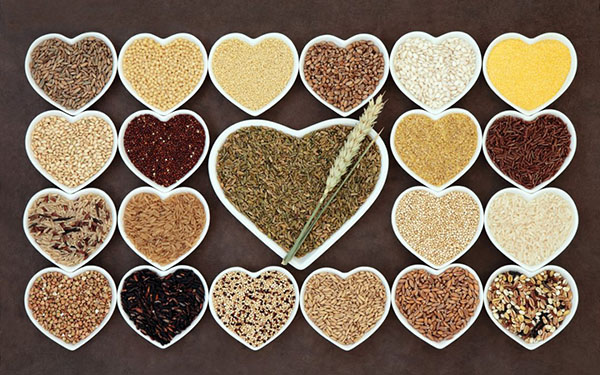Benefits of whole grains?
What is whole grain?
Ans. Whole grain is the entire seed of the plant and we call it a kernel. A kernel consists of three parts, the bran is a outer part skin and contains antioxidants and B vitamins but mainly recognize for providing the fiber in the diet, endosperm is the largest part of the kernel it contains vey starchy carbohydrates ,proteins and very small amounts of vitamins and minerals . If bran is where you get fiber than endosperm is where you get calories. When you buy white flour or white bread that means you are eating endosperm. The germ is the fetus or baby that can grow or sprout Into a plant, it is the most nutritious part of the grain and provide us with essential fats, proteins, phytonutrients and B vitamins which is missing in our diet. Therefore, a whole grain is whole part of the kernel containing bran, endosperm and germ, exactly as a grain would be growing in its natural state in an open fields.
What are the benefits of consuming whole grains?
Ans. Whole grains play an important role in lowering the risk of chronic diseases, such as coronary heart disease, diabetes, and cancer, and also contribute to body weight management and gastrointestinal health. Whole grains are a rich source of magnesium, a mineral that acts as a co-factor for more than 300 enzymes, including enzymes involved in the body’s use of glucose and insulin secretion. People whose diets supplied the highest average intake of choline (found in egg yolk and soybeans), and its metabolite betaine (found naturally in beets, spinach and whole wheat), have high levels of certain anti – inflammatory substances which reduce the risk of a wide range of chronic diseases including heart disease, osteoporosis, cognitive decline and Alzheimer’s, and type-2 diabetes. Whole wheat helps to prevent formation of gall stones. Interestingly, whole grains such as wheat also contain lignans, which are phytonutrients that act as weak hormone-like substances. Lignans occupy the hormone receptors in the body, thus actively protecting the breast against high circulating levels of hormones such as estrogen.
How much servings of whole grain should be taken by a moderate worker?
Ans. Eat least 48 grams .(i.e 3 serving) of whole grains in a day
What are the nutrients and calories present in whole grain?
Ans.
nutrition summary:
| Calories
339 |
Fat
1.87g |
Carbs
72.57g |
Protein
13.7g |
| Dietary fiber | Vitamin B Complex | Iron | Magnesium and zinc |
There are 339 calories in 100 grams of Whole Wheat Flour.
Calorie breakdown: 5% fat, 80% carbs, 15% protein. Whole grains are important sources of many other nutrients as well, including dietary fiber, essential fatty acids, several B vitamins (thiamin, riboflavin, niacin, and folate), and minerals (iron, magnesium, and selenium)
What is the right way of taking whole grain? Are whole grains consumed the same way as normal grain or there are any precautions that should be taken while consuming whole grain?
Ans. Whole grains are rich sources of nutrients but they are difficult to digest. This is due to the presence of phytic acid and other enzyme inhibitors, this is also due to the presence of bran which has insoluble fiber that resist digestion.
Certain processes have to be followed in order to enhance the nutrient conten of whole grains and also make the nutrients in them available to the body. Soaking and sprouting induces the germination process whic neutralizes the phytic acid (a chemical present in brans of all seeds which inhibits the absorption of calcium ,zinc ,magnesium and iron). Sprouting neutralizes enzyme inhibitors that are present in all seeds, (enzyme inhibitors inhibits the enzyme required for digestion of the grains). Sprouting will improve the digestion and increase the nutritional value of whole grains, it increases vitamins like vitamin c , carotenoids and several of the b vitamins.
Are they are beneficial for children as well as older people also?
Ans. Whole grain can improve digestive health and weight management. Individuals eating 3 servings of whole grain may reduce the risk:
Heart disease by 25-36%
Stroke by 37%
Type 2 diabetes by 21-27%
Cancer of digestive system by 21-43%
Obesity
Whole grains are rich in fiber, vitamins and minerals and when children begin eating whole grains early, They tend to develop a preference for those flavors. choose whole grain cereals in the form of whole wheat [pastas ,breads and pizzas

